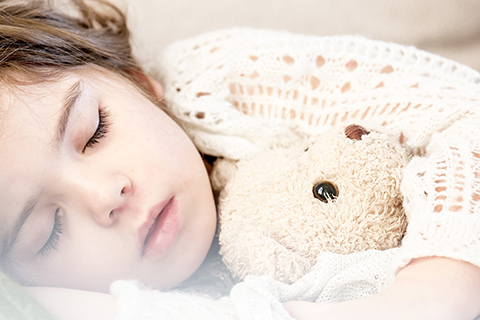Bedtime can be a difficult part of the day for everyone in your home. This blog post is intended to provide you with a few tips and tricks to ease the issues that arise when it’s time to go to sleep. A lot of individuals with autism and other learning differences have a difficult time falling and staying asleep, which can lead to days made more difficult by exhaustion. There are plenty of charts about the required amount of sleep your child needs each night, according to their age. For example, 12-15 hours of sleep is recommended for children 1-3 years old, while 11-13 hours of sleep is needed from 3-5 years. For children with sleep difficulties, they may not be accessing the correct hours of sleep needed. Following a bedtime routine can allow for a more successful evening and consequently more successful days.


- Create a consistent bedtime routine, such as bath time, put on pajamas, brush teeth, read two stories, get a drink of water, hugs, and kisses, and lights out. Sticking to the same order of events every evening will allow for your child to understand what is expected and to start to wind down and create healthy sleep habits. Many children may need visual pictures or a checklist, which can also help parents, grandparents, nannies, and babysitters complete the routine in the correct order, adding to the consistency of the plan and the success of falling/staying asleep!
- Not only is picking a set bedtime needed but also picking a time for screens to be turned off. Yes, that includes TVs, iPads, phones, and any other technology that may be stopping your child’s brain from being able to turn “off.” Once this time is established and consistent, your child will forget the days that they fell asleep with their iPad! Not only is it important to avoid screen time a few hours prior to falling asleep, but also to keep stimulating activities (like rough play or high energy games) to a minimum.
- Aside from all the routines that go into a successful night of sleep, consistency on where your child sleeps is also a key component to a full night of rest. Your child should have a designated sleep spot that is safe and relaxing for them, including textures and a few stuffed animals they enjoy (nothing too stimulating). Some children enjoy weighted blankets.
- Remember to examine the sleep environment outside of the bed, including the lighting, noise, and toy access. If your child wakes up extra early, look at how the lighting in the morning may be affecting their ability to sleep in. If they have a hard time staying asleep, examine the access they have to their toys. They may be potentially playing with them while the rest of the house sleeps!
There are plenty of little tips and tricks to help your child fall and stay asleep, which can help your child function at their best the following day. Remember to always consult your pediatrician if you have any concerns! Happy sleeping!

Blue Bird Day fosters socialization, sensory regulation, and pre-academic learning in children ages 2-7 years in therapeutic rotations that simulate preschool and kindergarten settings. Our compassionate therapists practice a relationship-based and family-centered approach, provide parent training, and collaborate on goals and individualized intensive treatment plans for your child.
We believe in a collaborative and multi-disciplinary team approach to therapy. A team of occupational therapists, speech-language pathologists, dietitians, developmental therapists, behavioral therapists, physical therapists, and therapeutic assistants are created for each child to ensure child and family are fully supported and the best possible results are achieved.
Options for individualized, group and virtual therapy sessions are available as well.
Want to learn more or you have a specific question? Feel free to connect with us here!



